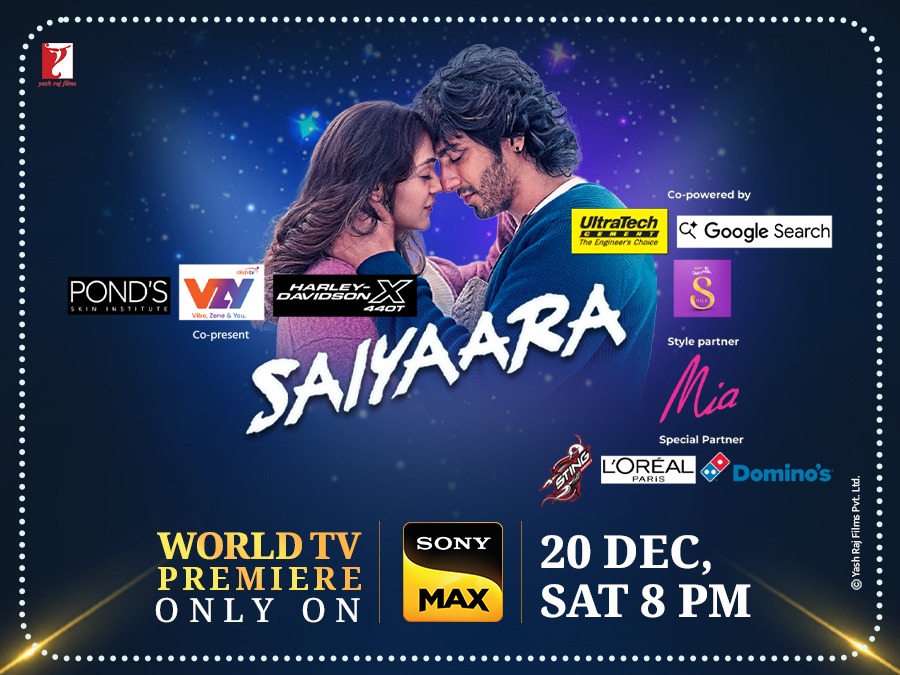/bmi/media/media_files/2025/08/25/bigboss-mahesh-shetty-2025-08-25-09-57-03.jpg)
New Delhi: For the first time, five editions of Bigg Boss in Hindi, Malayalam, Tamil, Telugu and Kannada are running together during the festive season. JioStar has positioned this slate as the “Bigg Boss Universe” to give advertisers a single platform that is national in scale and regional in depth.
Mahesh Shetty, Head of Revenue, Entertainment at JioStar, said, “When you put all five together, in terms of reach and engagement, it is very close to the IPL of entertainment. This is the biggest blockbuster launch of the festive season.”
The franchise has engaged around 400 million viewers annually over the past three years, touching nearly 45% of India’s television audience. In 2024, Bigg Boss delivered 4.5 billion impressions and more than 380 billion minutes of viewing across editions.
The Hindi edition alone reached 205 million viewers and clocked 112 billion minutes in Season 18. The 2025 Hindi edition went live on August 24.
Inventory on Bigg Boss is being sold at five times the rate of regular properties, making it one of the most expensive platforms for advertisers. Shetty said this premium is “far higher than any other reality show.” Already 70 to 80% of the inventory is sold out ahead of launch.
Across languages, close to 50 sponsors are already on board. In Hindi, presenting sponsors are Parle Agro’s Appy Fizz and Vaseline. Other partners include Danube Properties, Citroën, Flipkart, Silver Coin Atta, Manforce, Lakmé Peach Milk, Fujifilm, Lux Cozi and Haier.
This year marks the entry of real estate into the property with UAE-based Danube Properties. Shetty said he expects the sponsor count and revenue to exceed last year’s record.
Large advertisers are leveraging Bigg Boss across markets. Hindustan Unilever has taken properties across all editions. Asian Paints has taken four southern markets, while Berger Paints blocked Malayalam earlier in the year. Shetty also confirmed that JioStar is in talks with an auto major for an all-South buy.
Bigg Boss Malayalam Season 7 has given the Universe a strong start. The season opened with 12.6 crore minutes of watch time on JioHotstar in its first weekend, a 225% increase year-on-year. Nearly 30% of this came from connected TV, up 154% over the last two seasons. On broadcast, the season opened at a 15.3 TVR, the highest ever for the show and 22% higher than the previous year.
Across southern markets, Bigg Boss reaches around 200 million viewers each season and generates 4.1 billion hours of watch time. Repeat advertisers include Haier, Hindustan Unilever, Mondelez and Atomberg.
JioStar has built Bigg Boss as an integration-driven property rather than a spot-buy platform. Over the years, the show has created branded moments that are remembered by audiences.
Oppo launched in India through Bigg Boss in 2014. Garnier Men partnered with the Hindi edition for 14 consecutive seasons. Berger Paints integrated its products into the design of the Malayalam house this year. MakeMyTrip turned the Bigg Boss house into a homestay experience for winners last season.
Shetty said, “Our packages are handcrafted. From launching a car to a new beauty pack, we create solutions that cut through clutter. Bigg Boss allows a brand to be part of the contestants’ lives, which makes the integration more engaging.”
JioStar’s festive survey shows positive consumer intent. 92% of Indians plan to maintain or increase festive spending. Apparel, mobiles and electronics are the top categories. 52% plan to shop online, while 42% will shop offline. Millennials are expected to spend more than Gen Z, and women are driving category variety across beauty, gadgets and home décor.
Shetty said, “The revision in tax slabs has put more money in the hands of people, and GST changes have made many products more affordable. Because of this, brands are expected to spend more in order to push volumes. This festive season, across categories will be very strong in terms of advertising.”
He added, “Positive sentiment is driving advertisers to spend more. For us, Bigg Boss is the centrepiece of that strategy.”
Unlike the previous two standalone OTT editions, JioStar chose not to launch a separate Bigg Boss OTT this year. Shetty said, “We did not want to split our focus. Sometimes, when you do one version for OTT and another for broadcast, it confuses the viewer. Instead, we wanted to do one very large show properly and put all our efforts behind it.”
He also explained the decision to premiere the show on OTT at 9 pm and then on TV at 10.30 pm. “There is a particular FPC of Colors where certain shows run at fixed times and have a loyal audience. We did not want to disrupt that. Many of our fiction shows also drop on OTT before TV, some as early as six or seven in the morning, and then air on television in the evening. It is not something new or unique to Bigg Boss.”
He added, “TV viewing is often about family watching together in the evening, while OTT caters to solo viewing on the go. It is not about TV versus OTT; it is about leveraging all screens. We have not seen any negative impact on ratings. In fact, the 10.30 pm slot also benefits from the loyal audience base of other shows leading into Bigg Boss.”
The Hindi edition has seen 631 advertisers over 17 seasons. Longstanding associations include Hindustan Unilever, Parle Agro, Garnier Men, Capital Foods (Ching’s) and Vodafone. Across languages, more than 400 advertisers and 1,000 brands have partnered with Bigg Boss over the last five years.
With five editions running together in one festive window, record sponsors and premium pricing, Bigg Boss is consolidating its place as the most powerful non-sports property in India.
Shetty said, “There is no property like Bigg Boss for a brand to stand out in a cluttered festive market. This year, with five editions running simultaneously, it is going to be our biggest season yet.”
/bmi/media/agency_attachments/KAKPsR4kHI0ik7widvjr.png)
 Follow Us
Follow Us